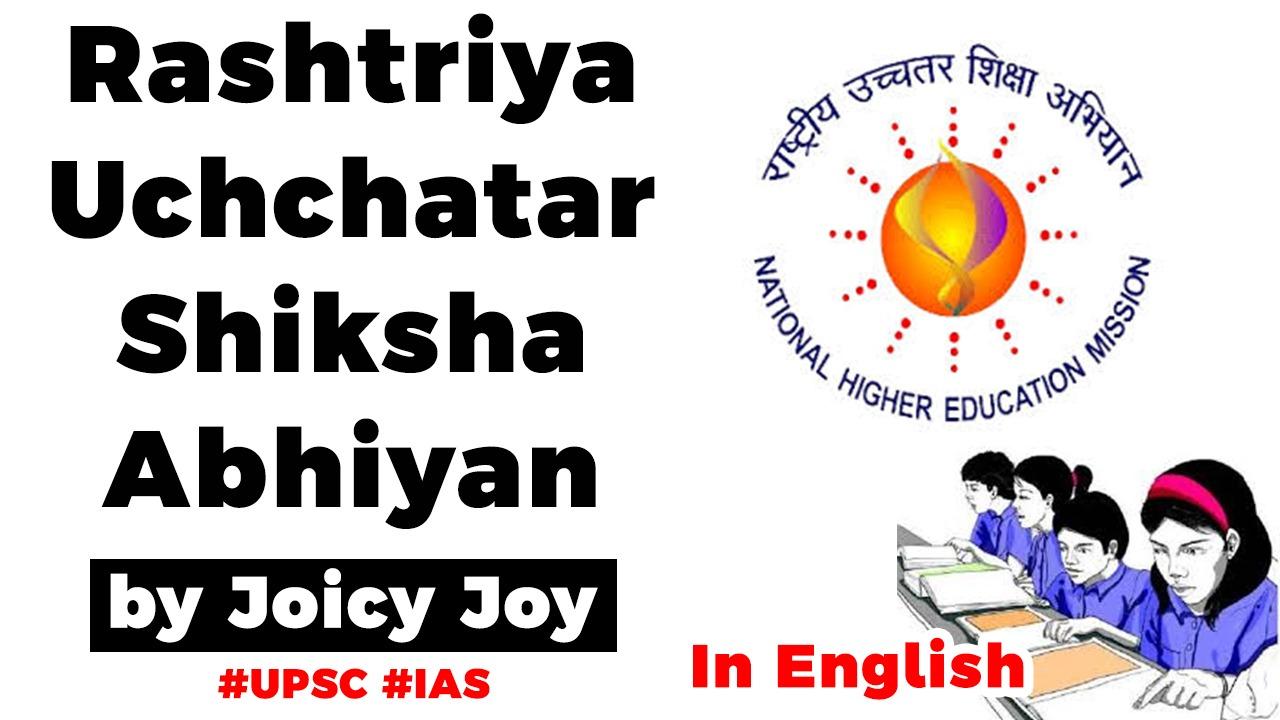Table of Contents
CURRENT AFFAIR
- The Ministry of Human Resource Development has approached the Prime Minister’s Office (PMO) to take notice of the alleged corruption in the implementation of the Rashtriya Uchchatar Shiksha Abhiyan (RUSA).
CONTENT
- Current Affair
- Alleged act of corruption
- RUSA
- Objectives
- Need
- Working
- Components
Topic
- Issues relating to development and management of Social Sector/Services relating to Health, Education, Human Resources.
Alleged acts of corruption
- The alleged acts of corruption in the implementation of RUSA were discovered in July, 2019 after Tata Institute of Social Sciences (TISS) director pointed out serious irregularities in the utilisation of funds.
Rashtriya Uchchatar Shiksha Abhiyan
- Rashtriya Uchchatar Shiksha Abhiyan is a Centrally Sponsored Scheme launched in 2013.
- Its aim was to increase enrolment in higher education by 30%.
- It primarily provides strategic funding to eligible State higher educational institutions.
Objectives
- Improve the overall quality of state institutions by conforming to the prescribed norms and standards.
- Adoption of accreditation (certification of competency) as a mandatory quality assurance
- Promoting autonomy in state universities and improving governance in institutions.
- Ensure reforms in the affiliation, academic and examination system.
- Ensure adequate availability of quality faculty in all higher educational institutions and ensure capacity building at all levels of employment.
- Create an enabling atmosphere for research in the higher education system.
- Correct regional imbalances in access to higher education by setting up institutions in unserved and underserved areas.
- Improve equity in higher education by providing adequate opportunities to the disadvantaged.
What was the need?
- India is estimated to have over 800 universities, with over 40,000 colleges affiliated to them.
- The Centre’s slant toward premier institutions has continued ever since the Eleventh Five Year Plan (2007-12).
Central Fund
- Presently, less than 6% of students study in about 150 Centrally-funded institutions.
- But they corner almost the entire funding by the Ministry of Human Resource Development (MHRD).
- The funding is mainly directed towards starting more IITs, IIMs and Central universities.
State Institutions
- About 94% of students of higher education study in 369 State universities.
- Despite being the face of higher education in India, State institutions do not get their due share.
- It was to address these critical concerns that the MHRD launched RUSA.
WORKING
- Under RUSA, states and institutions have to give an undertaking expressing their willingness to the idea of
- They should also agree to meet the States’ share of the cost.
- Accordingly, preparatory grants will be released to States to have the required systems, processes, and the technical support in place.
- The scheme is largely based on the conditional release of
- It is linked to reforms in the key areas of governance, learning-teaching outcomes, reaching out to the unreached and infrastructure support.
COMPONENTS
- RUSA would create new universities through upgradation of existing autonomous colleges and conversion of colleges in a cluster.
- It would create new model degree colleges, new professional colleges and provide infrastructural support to universities and colleges.
- Faculty recruitment support, faculty improvements programmes and leadership development of educational administrators are also an important part of the scheme.
- In order to enhance skill development the existing central scheme of Polytechnics has been subsumed within RUSA. A separate component to synergise vocational education with higher education has also been included in RUSA.
- Besides these, RUSA also supports reforming, restructuring and building capacity of institutions in participating state.
Latest Burning Issues | Free PDF






















 WhatsApp
WhatsApp